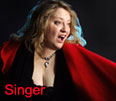 |
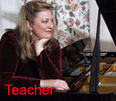 |
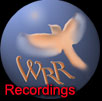 |
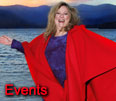 |
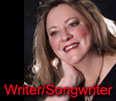 |
Robert Starer: A Remembrance
DANIELLE WOERNER
The American composer Robert Starer, respected throughout the music world for both the lyricism and the craft of his writing, died in April in Kingston, NY, at the age of 77. This article combines a brief biography of his life in music and letters with a personal remembrance by a singer who worked closely with him on many of his vocal pieces during the past decade.
Born in Vienna in 1924, Robert Starer was a citizen of several musical milieus during his active life. The composer, pianist, author and educator began his musical training at the State Academy in Vienna at the age of 13. Just a year later, after Hitler's annexation of Austria in 1938, the young Jewish musician emigrated to Israel, continuing his studies at the Jerusalem (then Palestine) Conservatory. There, his mentors included Joseph Tal, and his education included Arabic music as well as the European music on the school's curriculum. During World War II he served in North Africa and Europe with the British Royal Air Force. After the war, he came to New York for postgraduate work at The Juilliard School, also studying with Aaron Copland at Tanglewood in 1948. From 1949 to 1974, Robert taught at Juilliard, and from 1953 to 1991 at Brooklyn College and the Graduate Center of the City University of New York, where he was named a Distinguished Professor in 1986. By 1957 he had become an American citizen, residing in New York City and later in Woodstock, NY, where he shared a home with his long- time partner and frequent artistic collaborator, the novelist Gail Godwin.
Robert truly became a part of that famous little rural community and its environs, one of its major cultural figures and a great supporter and encourager of those involved in its musical arts. The team of Starer and Godwin created chamber operas and other pieces which were presented at the Hudson Valley's major concert venues, performed by a combination of professional and semi-professional singers and instrumentalists from the area. For the past three years, a new Starer work with a libretto by Godwin has been featured in The Woodstock Cycle, an annual series of new pieces on spiritual themes which they helped inaugurate at St. Gregory's Church, Woodstock. His four chamber operas were performed in the area, including the premiere of The Other Voice, based on the story of a 7th-century abbess; larger-scale works were played by the Hudson Valley Philharmonic and sung by the various choral societies.
I met Robert in 1991, at a benefit Hauskonzert for a new opera company, shortly after I had moved to the area from Manhattan. Robert evidently enjoyed my singing that day, for he invited me to come and read through some music with him whenever I liked -- not only his own, but Faure, Schubert, operatic arias, anything we both enjoyed. We of course dipped into his own music as well, and I was immediately struck by its beauty and originality as well as its fine writing for the voice, the latter a skill in short supply among many composers of our time who write otherwise compelling pieces. We performed together at a number of local and regional benefits, and for my debut with the Woodstock Chamber Orchestra he wrote a beautiful piece, Letter to a Composer, to a Gail Godwin text. We later recorded his chamber pieces The Ideal Self and Images of Man together -- Robert giving what turned out to be his last recorded performances as a pianist -- for a CD issued internationally by Parnassus two years ago, during the celebration of Robert's 75th year. More recently, he was working on a new piece for me to premiere -- a work with dancers and flute -- at the next Woodstock Cycle.
I mention this personal history in some detail because, through it, I came to know Robert as a colleague and a friend, and had an opportunity to see at close range both his generosity and his marvelous sense of balance about what was most important in music.
This was a composer whose work is known internationally through performances and over 20 recordings on Albany, CRI, MMC, Parnassus, Transcontinental, and Vox. He was continuing to add to his large and varied oeuvre of solo instrumental, chamber, choral and orchestral music, and many compositions for singers, up until just a day or two before his death, when he was completing a major choral/orchestral commission. His stage works include several ballets created for Martha Graham, and Broadway theater collaborations with Herbert Ross. Orchestras in the U.S. and elsewhere perform his symphonic music, under the direction of conductors that have included Mitropoulos, Bernstein, Steinberg, Leinsdorf, and Mehta. The recording of his Violin Concerto, with Itzhak Perlman and the Boston Symphony under Seiji Ozawa, was nominated for a Grammy in 1986. Other noted Starer interpreters include sopranos Leontyne Price and Roberta Peters, violinist Jaime Laredo, cellist Janos Starker, and flutist Paula Robison.
Yet this was also a composer who made many a gift of music to those in the bucolic area to which he had "retired," and that sense of community as well as individual musical connection was very important to him. When we wanted to record Letter to a Composer on the chamber music CD, he created an appropriate version. His Woodstock Cycle pieces were gifts to the artists, St. Gregory's, and the community at large. After his death, many people who had known him in his earlier days at Juilliard and Brooklyn College commented on his lively interest in those around him and his generosity of spirit. As for that sense of balance: when working with him to prepare pieces I was struck by how this composer, so precise and intentional in his compositions that one could say he never wrote an unnecessary note, always seemed to put the larger picture foremost. A few wrong notes in a rehearsal -- even, heaven forbid, a performance -- troubled him not at all when he felt that the essence, the heart, of the piece was being realized.
In addition to his compositions, Robert left an enduring legacy through other kinds of publications. In the pedagogical arena, Rhythmic Training and Basic Rhythmic Training are standard texts in programs of musical study. He wrote a number of pieces for young musicians, for, as he said in his autobiography Continuo: A Life in Music: "Being with the young keeps us young and, as we all know, the child in us is the creator." Continuo was published by Random House in 1987 and excerpted in The New Yorker, Musical America, and the London Times. In 1997, he saw his novel, The Music Teacher, published by Overlook Press. Given his elegant, economical use of the written word as well as the musical note, it is Robert Starer who should have the last word here. In Continuo, he described his intention in relation to the contemporary listener: to write "music that is not tedious; music that holds his interest because of its beauty and logic; music interesting enough to demand and hold his full attention; music that -- let us not be afraid to say it -- gives him pleasure."